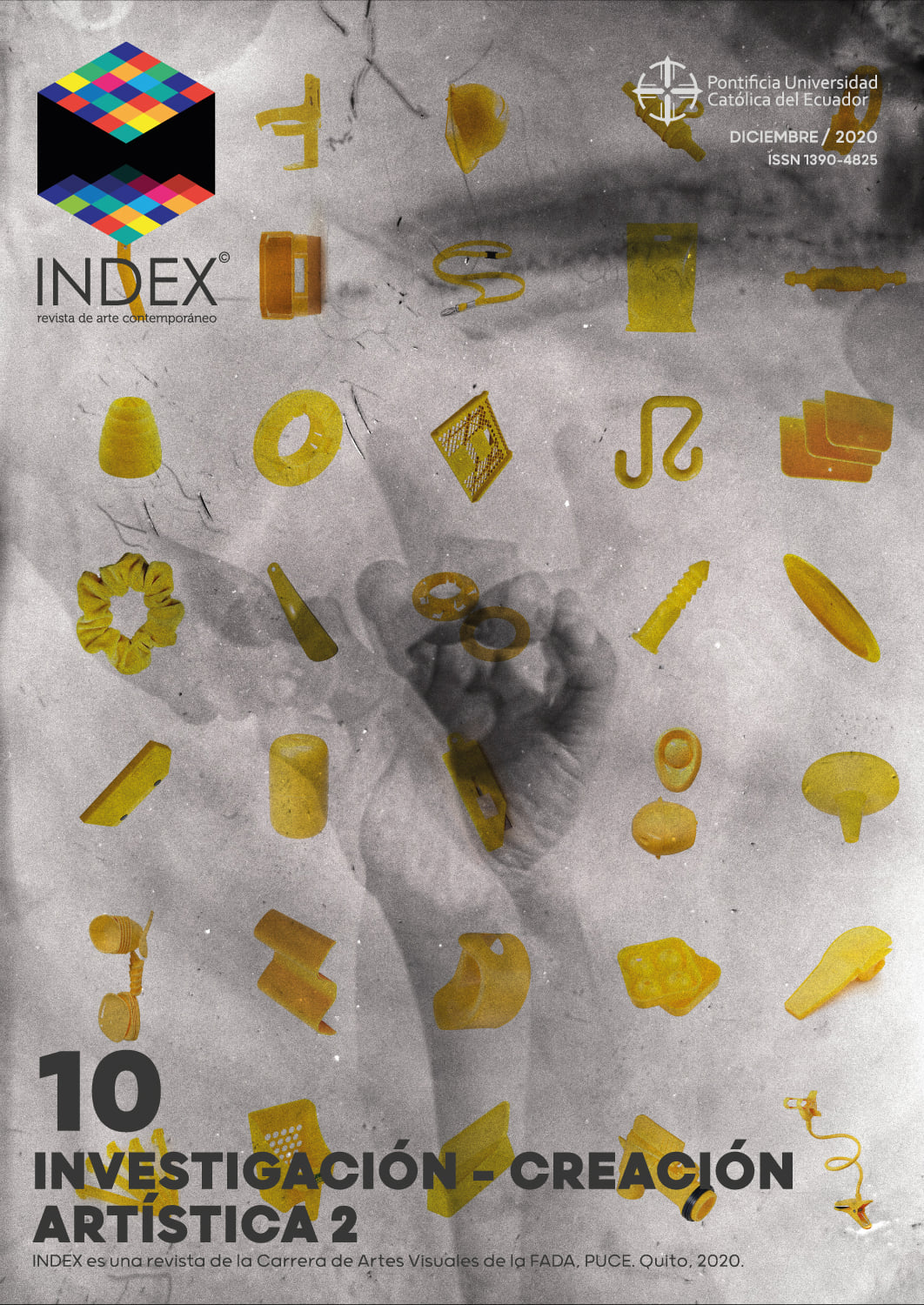The dream of the second to last scene of the movie No country for old men and an interpretation of the poem Journey to Byzantium by William Butler Yeats
Main Article Content
Abstract
This paper analyzes the second to last scene of the movie No country for old men (2007), directed by Joel and Ethan Coen. The film is an adaptation of the novel of Corman McCarthy (2005) with the same name, and at the same time, this is an interpretation of the poem Sailing to Byzantium of William Butler Yeats (1928). Although the cinematographic result is linked direct to the novel, it also is to the poem, however not in an obvious way. Furthermore, this text analyzes both the second to last scene of the movie and the poem, to find the relationship between them.
Downloads
Article Details
Index, revista de arte contemporáneo maneja sus derechos bajo licencia Creative Commons Reconocimiento-NoComercial 4.0. En ese sentido los envíos quedan sujetos a la decisión del autor.
References
Badiou, A., (2005), El siglo, Buenos Aires Argentina, Manantial.
Butler, W., (1928), Navegando a Bizancio (Traductor Villavicencio, J.) de Recuperado de: https://buenosairespoetry.com/2016/06/21/navegando-a-bizancio-de-william-butler-yeatsnavegando-a-bizancio-de-william-butler-yeats/
Coen, E., Coen, J. y Rudin, S. (productores), Coen, E. y Coen, J. (directores). (2007). No country for old men. Estados Unidos: Miramax Films, Paramount Vantage, Scott Rudin Productions y Mike Zoss Productions.
Nietzsche, F., (2016), Consideraciones intempestivas, CreateSpace Independent Publishing Platform
Deleuze, G. (17 de mayo de 1987). Qué es el acto de creación. Conferencia llevada a cabo en la FÉMIS, École Nationale Supérieure des Métiers de l’Image et du Son, París.
Deleuze, G., (1984), La imagen-movimiento. Estudios sobre cine 1, Barcelona España, Paidós comunicación.
Diccionario filosófico abreviado (1959). pág. 330-333. Recuperado de http://www.filosofia.org/enc/ros/mat03.htm
Empire byzantin. (10 de febrero del 2019). En Wikipedia. https://fr.wikipedia.org/wiki/Empire_byzantin
Fournier, S. (18 de junio del 2017). La figure paternelle : ¿Déclin ou transformation? PSYCHASOC. Recuperado de: http://www.psychasoc.com/Textes/La-figure-paternelle-declin-ou-transformation
Freud, S., (2013), La interpretación de los sueños, Madrid España, Akal (Trabajo original publicado en 1899)
González, L., Aproximación a la filosofía de Hegel Recuperado de: http://www.uca.edu.sv/facultad/chn/c1170/aproximacionahegel.html
Hegel, G.W., (1875), Esthétique, París Francia, Germer-Baillère. (Trabajo original publicado en 1835)
Hegel, G.W., (1975), Introducción a la Historia de la Filosofía. Madrid España, Aguilar.
Jameson, F. (1991), Ensayos sobre el posmodernismo, Buenos Aires Argentina, Imago Mundi.
Lacan, J., (1966), Écrits, Paris Francia, Seuil.
Morin, D., (2011), Le rêve dans la philosophie de Nietzsche. https://dumas.ccsd.cnrs.fr/dumas-00611512/file/Denis_Morin_-_Le_reve_dans_la_philosophie_de_Nietzsche.pdf
Schallum, P., (Sin fecha) Hegel, l’art et le problème de la manifestation : l’esthétique en question. http://revuephares.com/wp-content/uploads/2013/09/Phares-XIa-03-Schallum-Pierre.pdf
Steichen, R., (2002), Des pères à la fonction paternelle, Bruselas, La Revue Nouvelle.
Žižek, S., (2006), Órganos sin cuerpo, Valencia España, Pre-textos.

